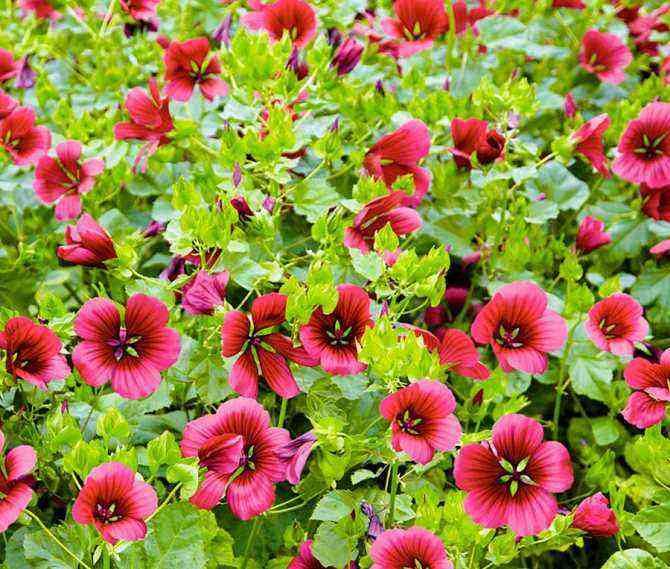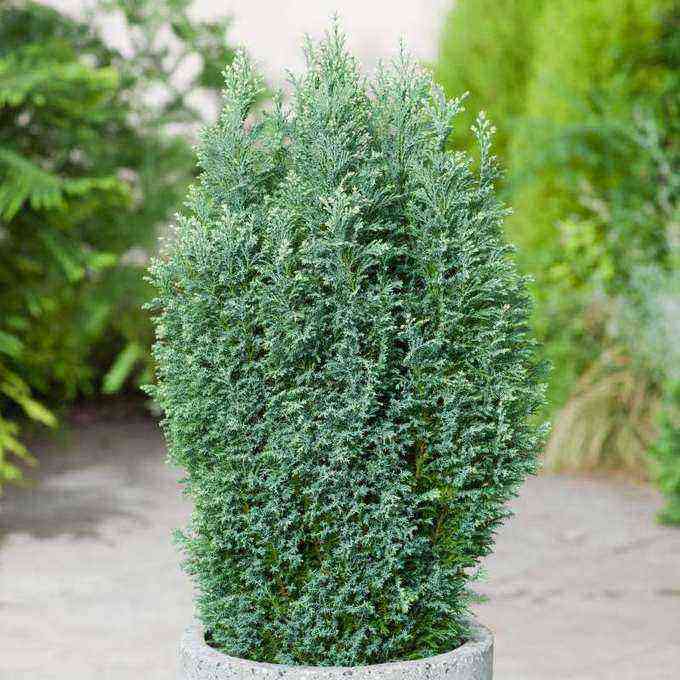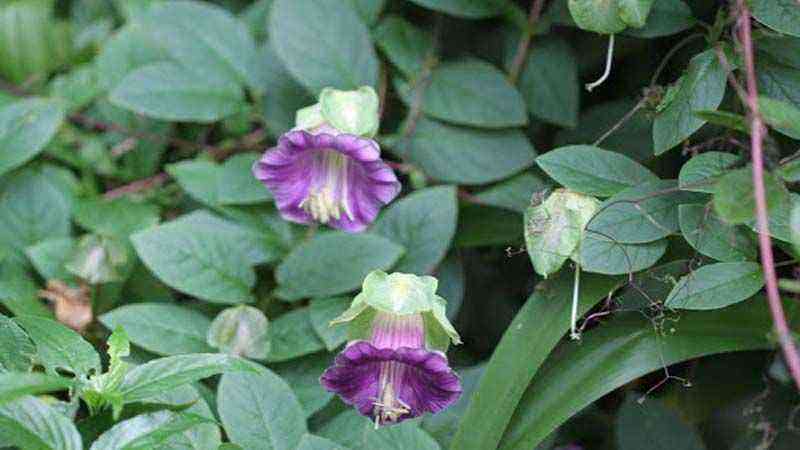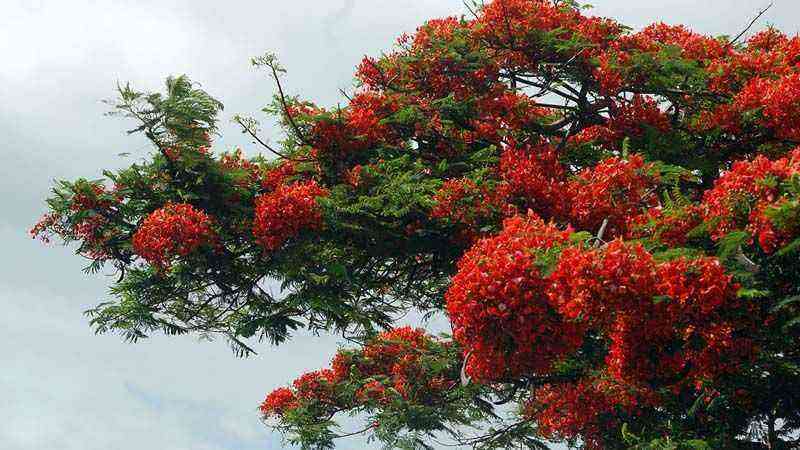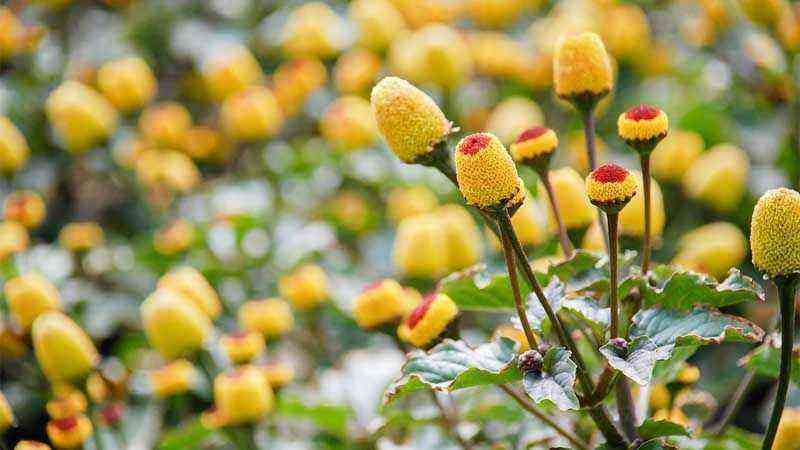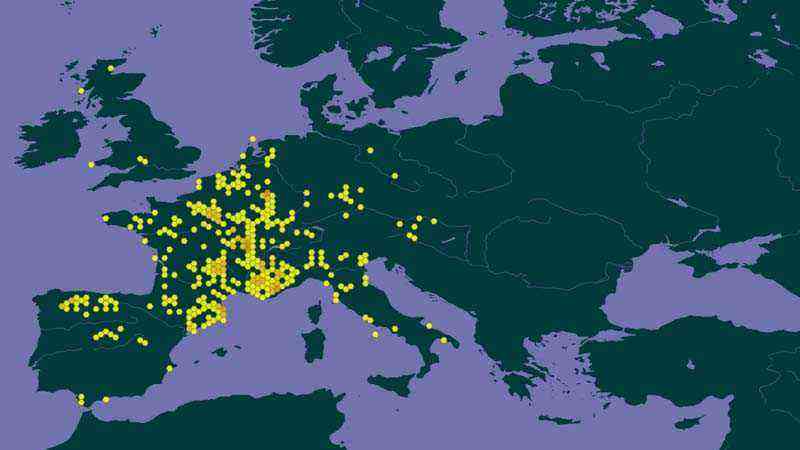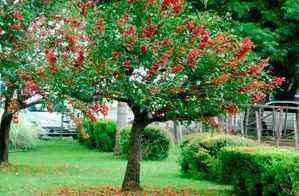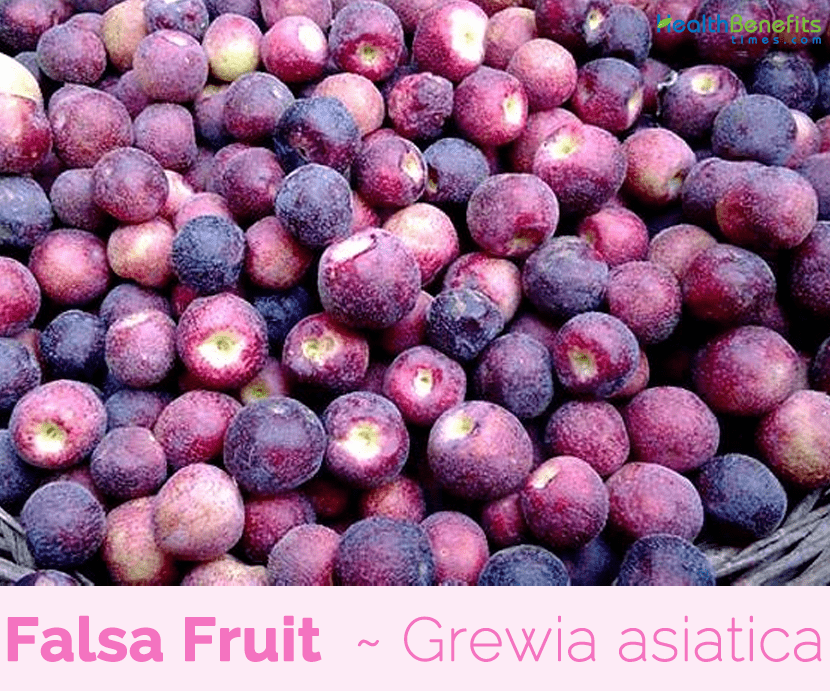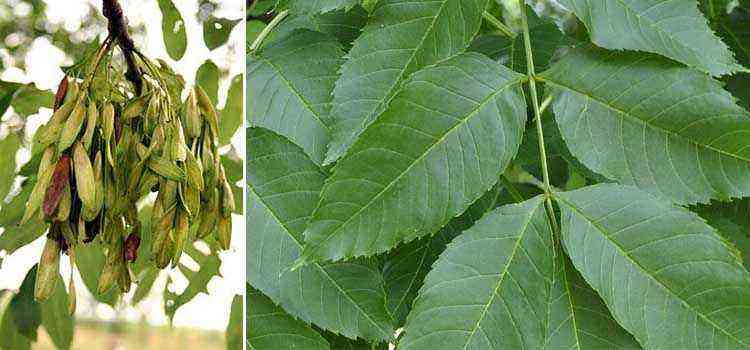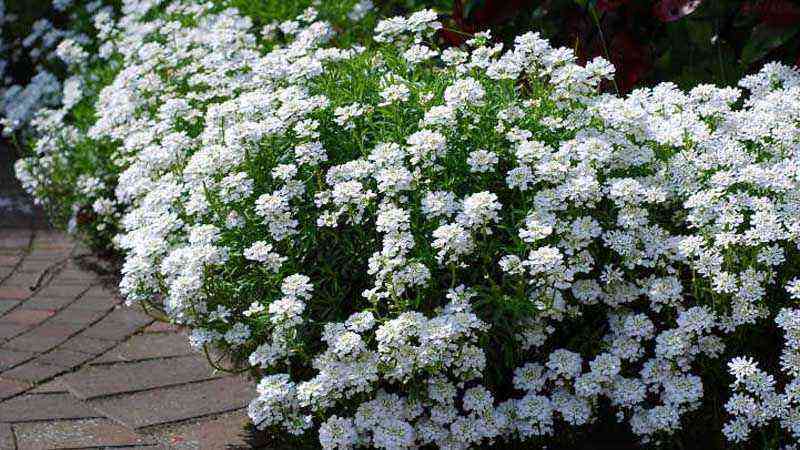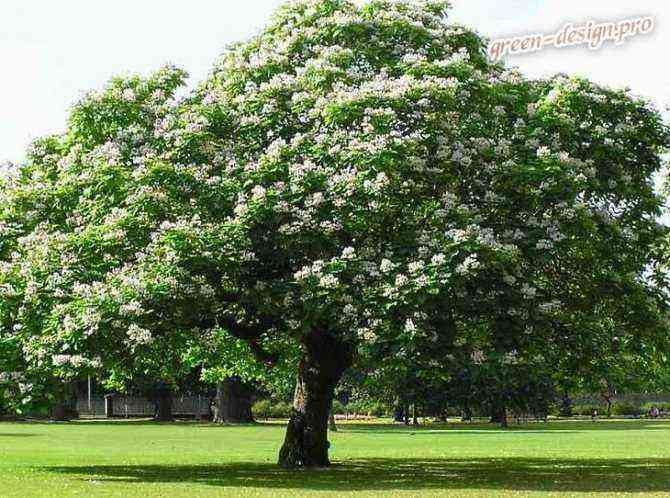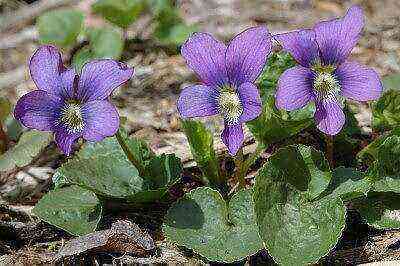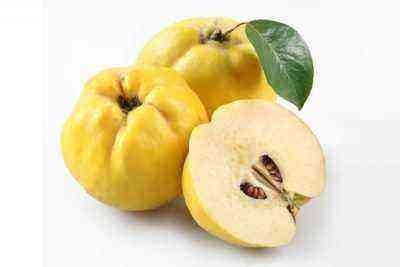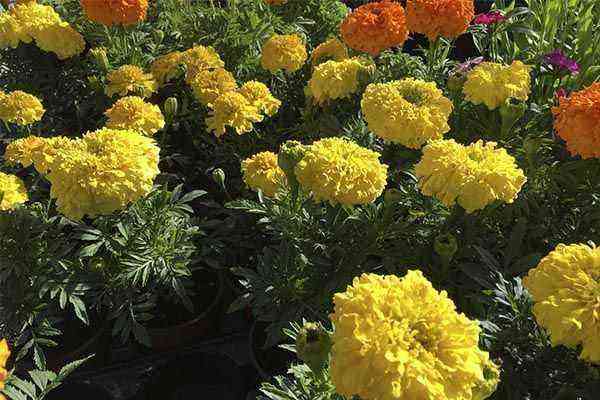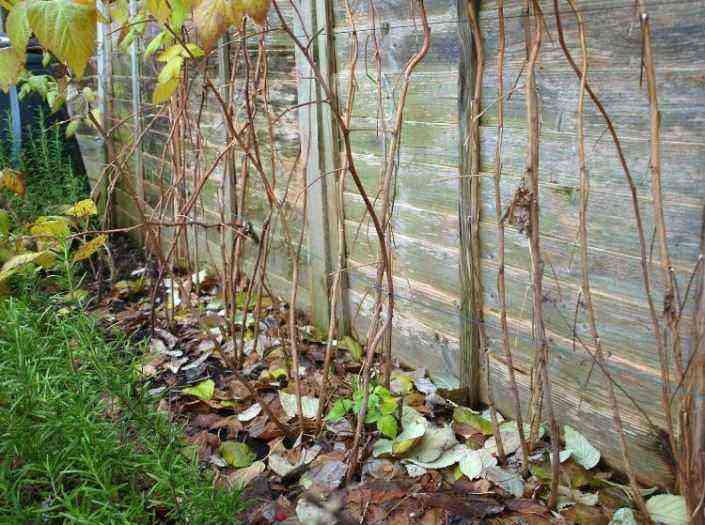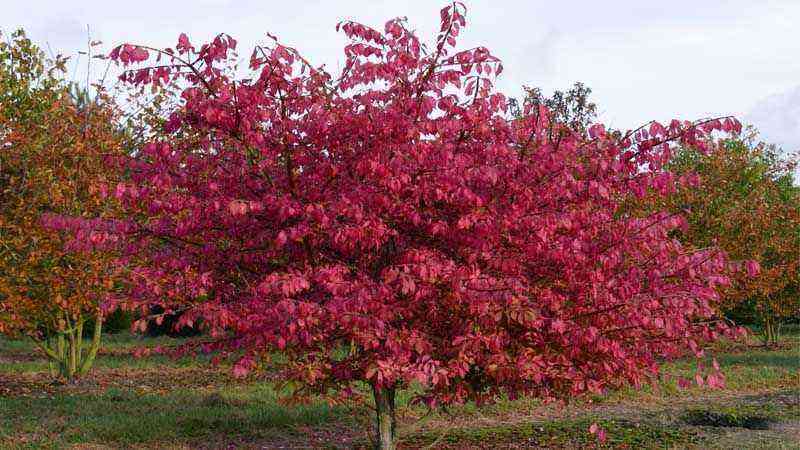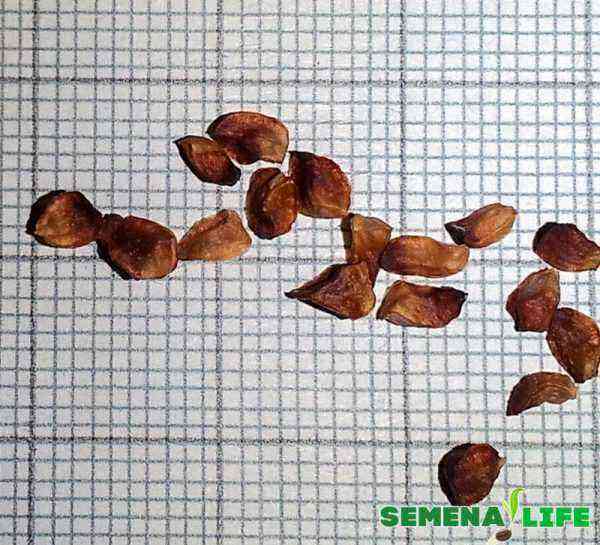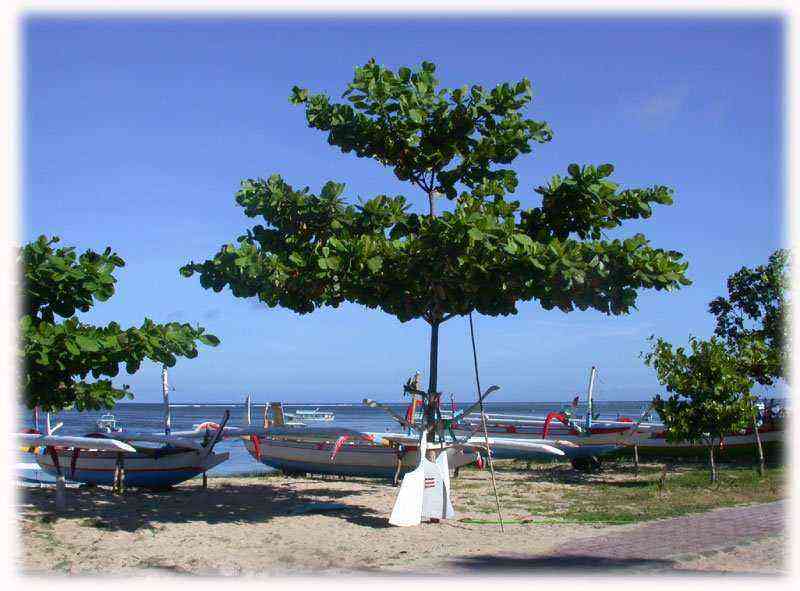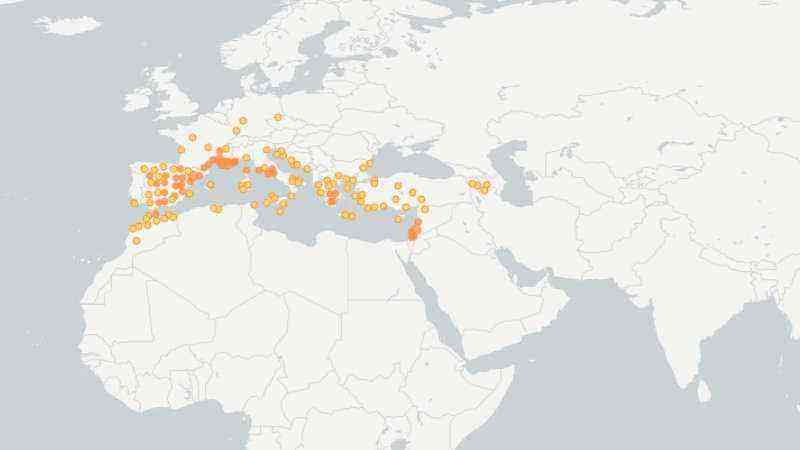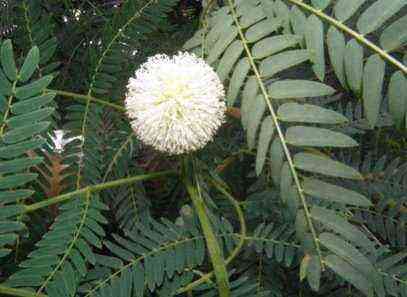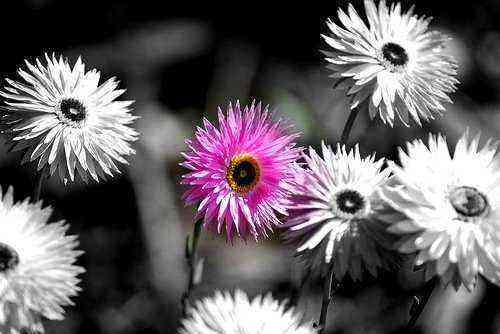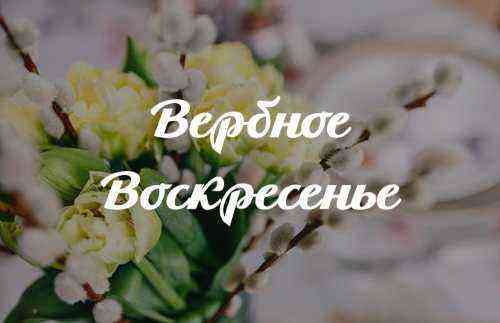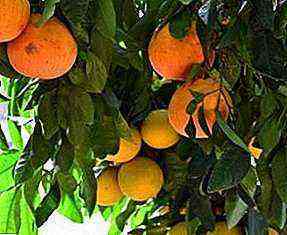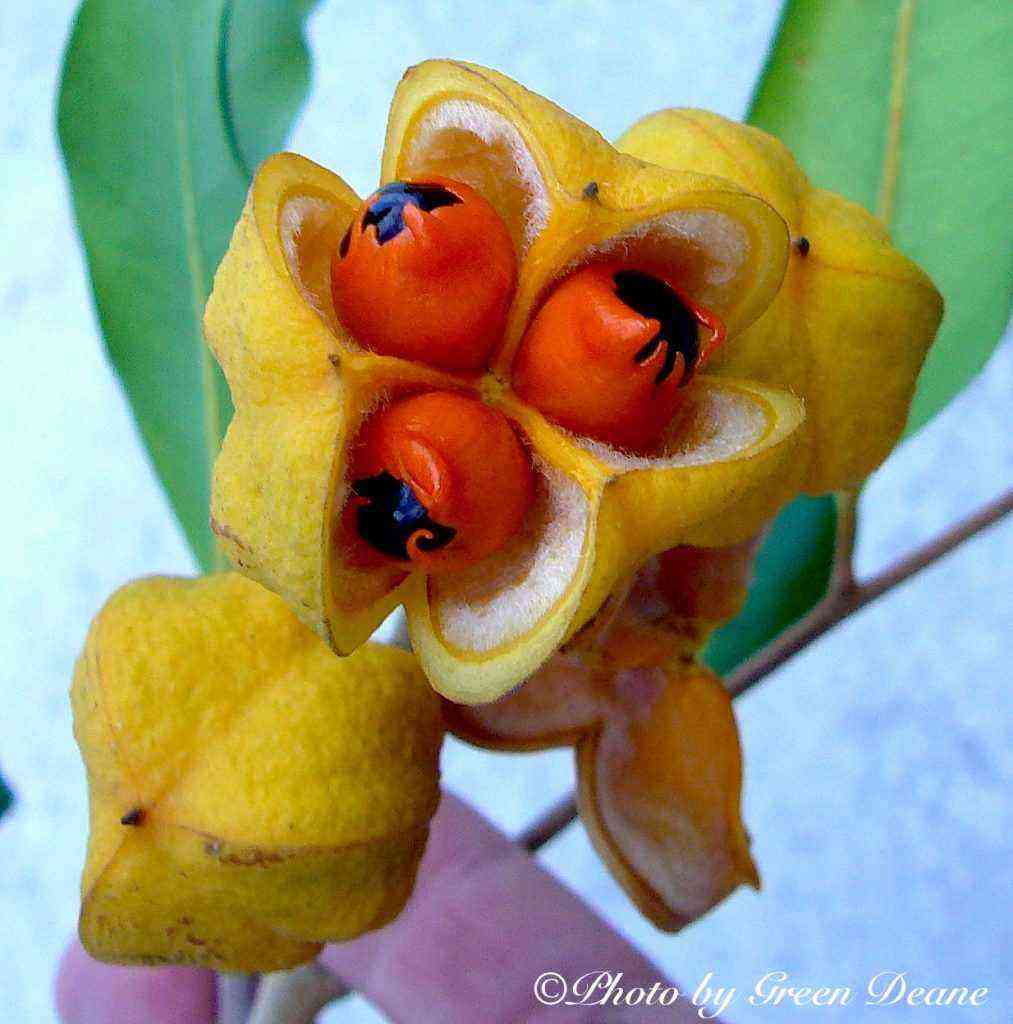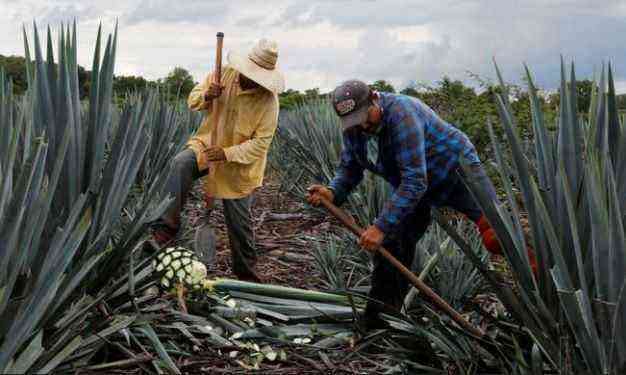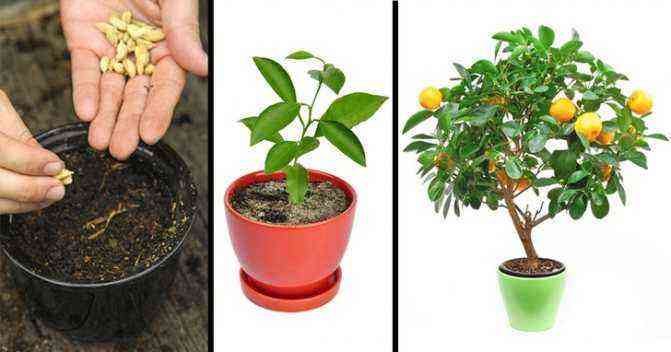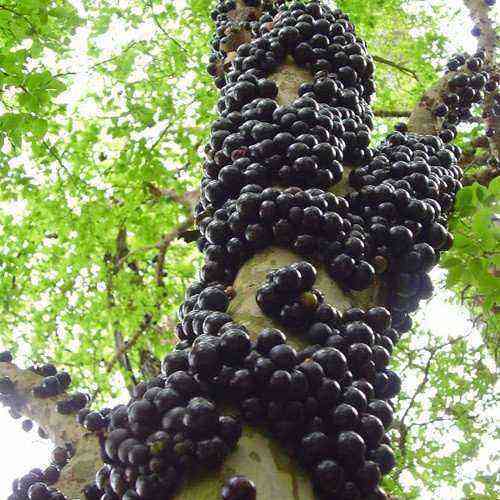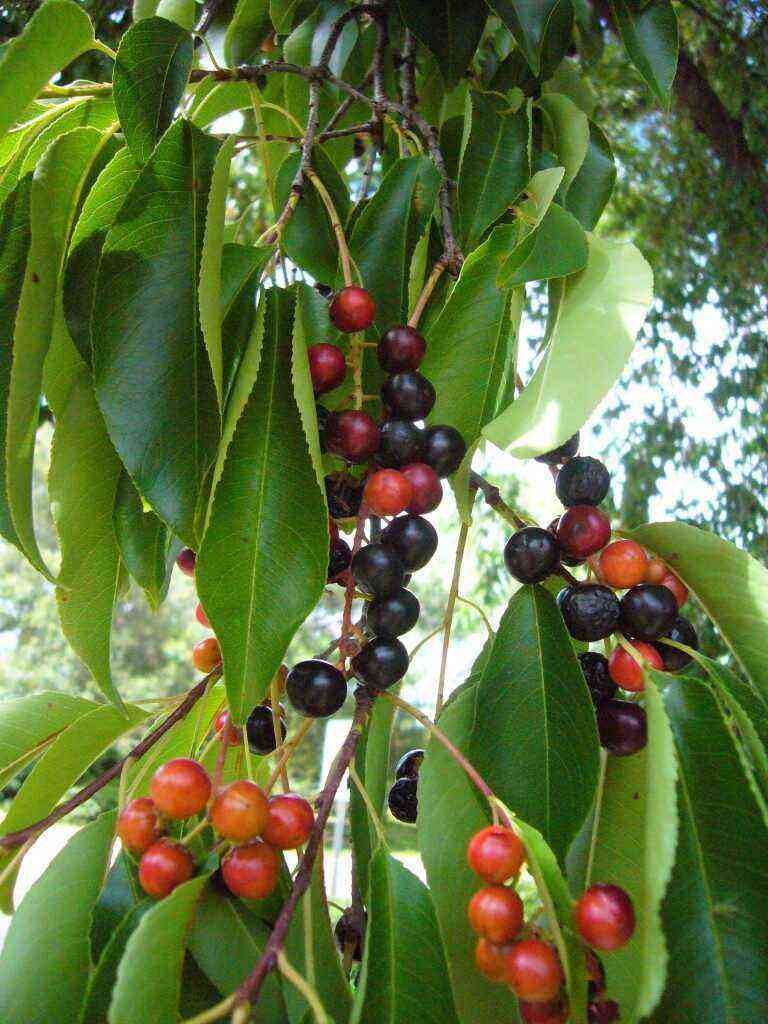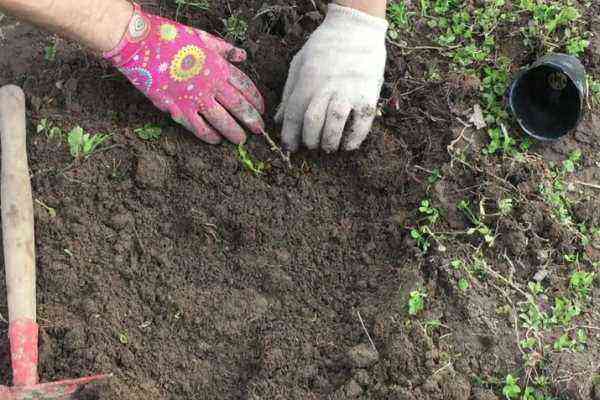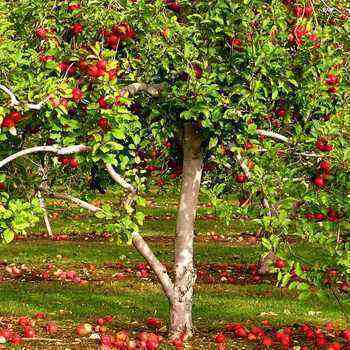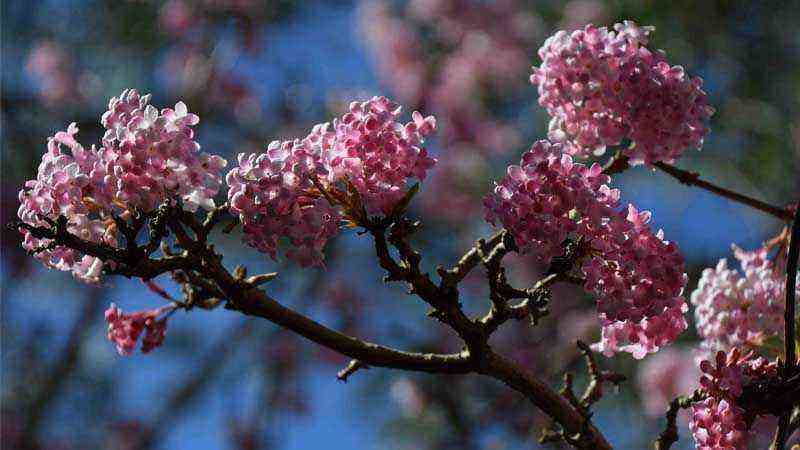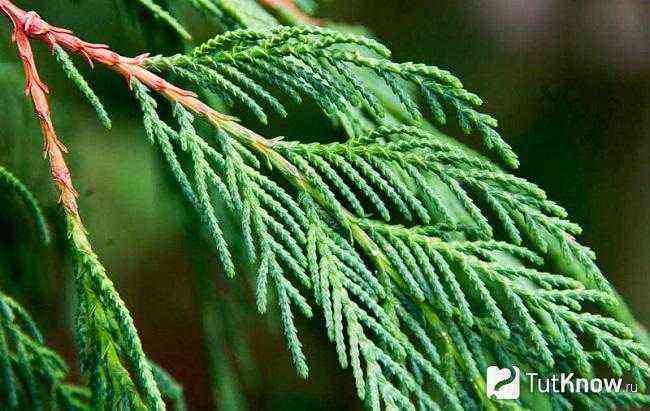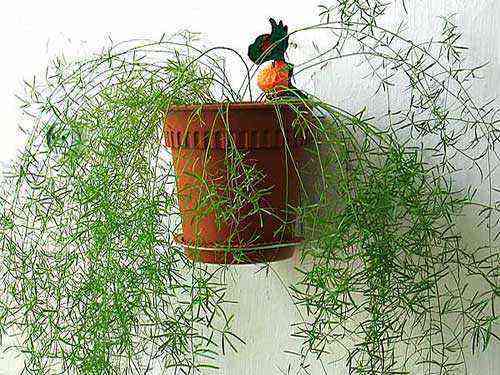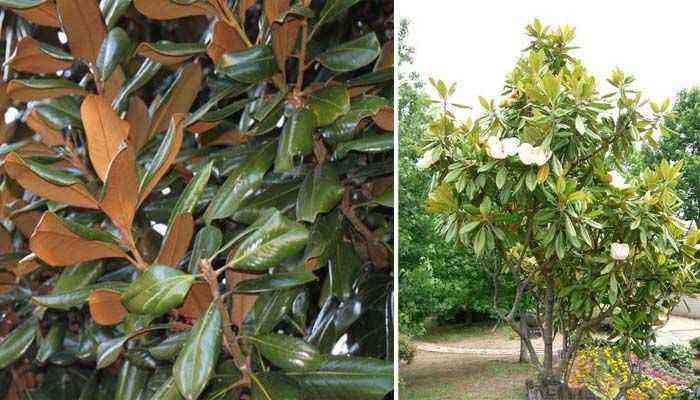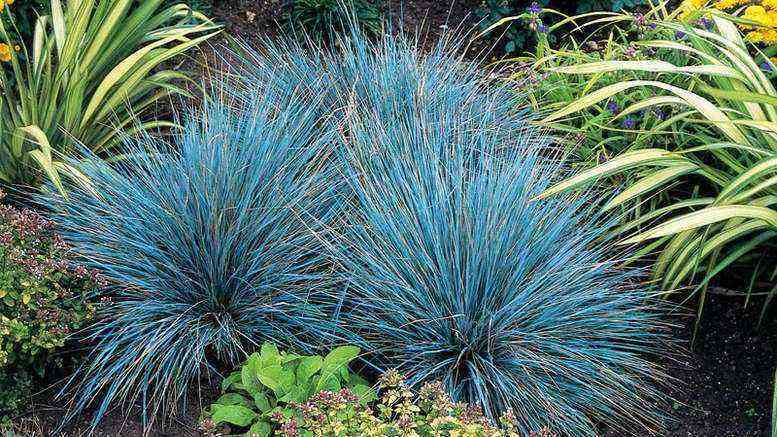Basically, irga is used as an ornamental plant. In spring, it blooms very beautifully and smells fragrant throughout the garden. Its white inflorescences are a bait for bees, which is why in the future it is well pollinated and bears fruit. And to get a healthy plant and a good harvest, you need proper care, starting with planting.
In what time frame is it necessary to plant an irga
When choosing a planting date, gardeners need to take into account climatic, zonal conditions.
The best time for planting seedlings in central Russia is autumn.… Before the onset of the first frost, saplings planted from mid-September to early November, manage to take root and gain strength for wintering.
Autumn is the most favorable time of the year for planting irgi
In the northern regions of Russia, the planting of irgi should be postponed to spring. This is due to early autumn frosts. And in the spring, when the soil begins to thaw a little, you can plant bushes that are in a dormant period. With increased sunlight and the onset of warmer days, the irga begins to dissolve its buds, without the risk of freezing.
An important condition for obtaining the maximum yield from the plant is compliance with the optimal planting dates. If this deadline for the autumn planting is missed, but the seedlings are ready for planting, they can be saved until spring using one of the methods suggested below:
- Place in a container filled with sand or sawdust, and store in a cool dark place. Better if it is a basement or cellar;
- Dig in the ground, while tilting the seedlings at an angle of 45 degrees from the soil and cover with snow in winter;
- And the last way wrap in a bag and put in the place of the garden where a large snowdrift forms in winter.
What diseases and pests can threaten the culture
Irga Lamarck is rarely affected by any disease. Diseases are found, as a rule, only on old and neglected trees.
The main ones are shown in the table:
| Disease | Symptoms | Treatment and prevention |
| Powdery mildew of irgi | Gray spots on bark and leaves. Leaves affected by the fungus turn brown and fall off, the shoots dry up | Leaves and shoots are cut and burned. The bush is treated with the preparations Raek, Tiovit Jet |
| Ascochitous spotting of irgi | Irregular brown spots appear on the leaves, the leaf turns yellow and falls off. The disease reduces the frost resistance of irgi | Treatment in early spring with Bordeaux liquid 1%. In case of serious damage, the treatment is repeated in the fall. Infected leaves are burned |
| Septoria spotting irgi | The leaves are covered with numerous round specks of borax, then turn yellow and fall off | The same as with ascochitis |
| Песталоция ирги | The edge of the leaf plate turns brown, on the border of healthy and affected tissue, a characteristic yellow stripe | The same as with ascochitis |
| Irgi monilial rot | Causes decay and subsequent mummification (drying) of berries. Infected berries remain on the net and are sources of disease | Pick mummified berries. Three times treatment with Bordeaux liquid 1%: bud formation, immediately after flowering and two weeks after the second treatment. |
Pest insects also do not pamper Lamarck’s Irga with their attention. This is due to the fact that the bushes are often visited by birds, especially the fieldbirds, which are a much larger problem for the harvest. The main insect pests of irgi are presented in the table.
| Pest | What amazes | Method of control or prevention |
| Rowan moth | Berries, moth caterpillars live in them | Spraying immediately after flowering with Fufanon or Karbofos preparations. The treatment is repeated after 12-14 days. |
| Irgovy seed eater | Berries, seed-eater larvae eat seeds in them | |
| Rowan moth | Berries, moth caterpillars gnaw passages in them |
Irga Lamarca, photo and description of which are given in this article, is an excellent option for both the gardener and the landscape designer. The shrub combines visual appeal and at the same time is a good source of tasty and healthy berries. However, the description of Lamarck’s irgi would be incomplete without mentioning that the shrub is an excellent honey plant. No wonder its Latin name Amelanchier means “to bring honey”.
Reviews of gardeners about Irge Lamarck only confirm that the decision to plant this shrub on a personal plot is correct. There is hardly another horticultural crop capable of producing an excellent harvest with such a minimum investment. In addition, planting and caring for Lamarck’s irga will not cause serious difficulties even for novice gardeners.
When is the best time to plant – in spring or autumn?
According to the advice of experts, the best time to plant or transplant all fruit and berry plants is autumn. If the terms and rules of autumn planting are met, the best planting material is used, your plant will easily take root.
Benefits of planting trees in autumn:
- Autumn landing is a little hassle, since frequent watering and fertilization are not required. Autumn is the time of abundant moisture;
- It is more expedient and it is more profitable to buy seedlings in the fall, because it is during this period that there is a large selection of planting material. The last leaves are still on the seedlings, there is a well-developed root system, according to which you can choose a healthy plant. Also, some sellers can demonstrate the ripe fruits of this plant;
- Planting a plant in autumn save the gardener’s time in spring, thanks to which he will be able to do other garden work;
- Less damage will be done to the plant, since at this time a period of rest begins.
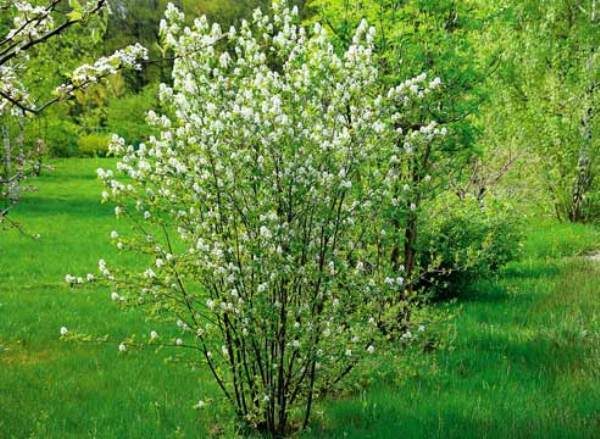
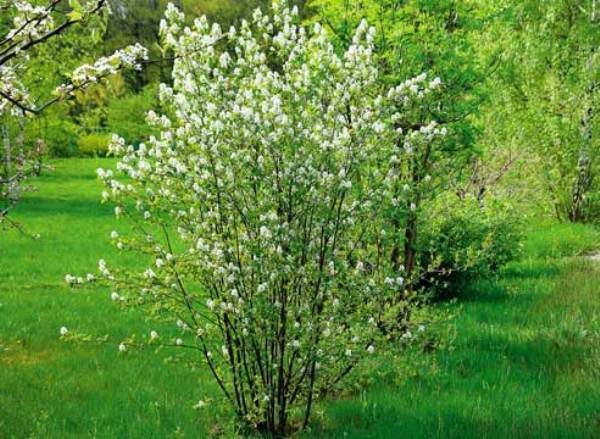
Subject to the rules and terms of autumn planting, the irga will easily take root
But there are also disadvantages when planting in the fall. These include:
- Very cold winters, with deep freezing of the ground, which can harm the root system of the seedling;
- In winter, often trees exposed to rodent infestations;
- Big trouble planted bushes can cause strong winds, a rough snow crust formed, a small or large amount of snowfall;
Important rules for boarding, seat selection
If you have a garden plot, then when planting irgi, first of all it is necessary to determine the place… The irgi bush grows strongly over time and takes up a fairly large area in the garden, so you need to plant it so that it does not interfere with the rest of the fruit and berry plants in your garden. Also, the irgi has abundant growth, which over time will litter your site and cause inconvenience. Better to plant irga somewhere in the corner of the garden. Approximate distance from other trees from 2 to 5 meters .


Irga is a spreading bush, therefore, when planting, you should maintain a distance of 2 – 5 m from neighboring plants
You also need to consider the types of soil your plant will grow on. Although the irga is unpretentious to the types of soil, nevertheless, it does not like the close location of groundwater, since the root system goes 3-4 meters deep and will be in constant contact with moisture. This can lead to root rot. Therefore, it is better to plant on light, fertile soils. Such soils contribute to the minimum formation of root shoots.
How to plant a shrub
Irga perfectly reproduces both by seeds and by root offspring. First you need to properly prepare the seedling for planting. Better to choose a one or two year old scion… You also need to select more healthy bushes, not damaged by insects and not broken off. Species and varieties of irgi are considered important when choosing a seedling. When planting several plants, take into account the distance between them up to two meters.
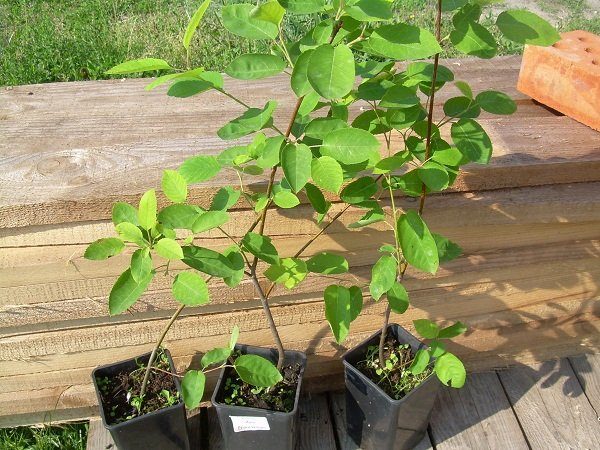
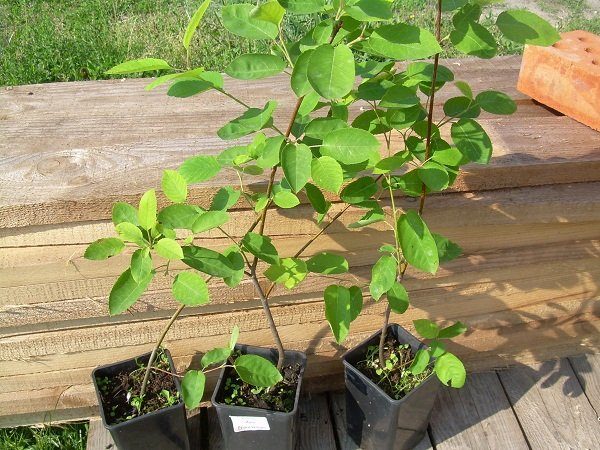
It is advisable to plant Irga with seedlings at the age of 1-2 years in the fall
We have already mentioned that the choice of location and soil depends on the light, the presence of fertile soils, and the amount of space around the tree.
Where to start planting and further care
You need to dig a hole about two bayonets of the shovel deep into, and about 40 to 60 cm wide. Carefully pour the earth to the side. Drainage can be placed on the bottom of the pit (broken brick, small stones, broken slate) so that moisture in the soil does not stagnate. You can add sand, black soil to the hole. Further, it is necessary to pour a little earth in the form of a tubercle at the bottom of the hole, so that it is easier to place our seedling on it. We put an irga on this tubercle and straighten the roots along it. Next, we cover it with earth, but so as not to bury the place where the trunk passes into the root system. The soil around the planted plant should be trampled down and watered abundantly.
Many gardeners advise, after planting, pruning shoots to 15 cm so that a few buds remain on the branches.
We have already mentioned that irga is an unpretentious shrub. It does not require significant maintenance. The main thing is watering as the earthen coma dries up around the tree and applying fertilizers. Used as fertilizers humus, potash fertilizers, superphosphate and organic mixtures.
Diseases and pests
Irga is ill quite rarely. Fungal diseases can be found on neglected bushes, as well as growing in conditions of excessive moisture. The most common irgi diseases are shown in the table.
| Disease | Symptoms | Treatment and prevention |
| Ascochitosis | Irregular brown spots on the leaves. Affected leaves die off and fall off. The frost resistance of the bush drops sharply. | Treatment with Bordeaux liquid 1% until the kidneys swell. In case of severe damage, repeat the treatment in the fall. Affected leaves must be destroyed. |
| Monilial rot | The berries rot and then dry out on the branch, becoming carriers of fungal spores. | Treatment with Bordeaux liquid 1% three times per season: before flowering, immediately after it and then after two weeks. |
| Mučnistaâ rosa | Light gray spots on the leaves. The affected leaf then darkens and falls off. | Treatment with Tiovit Jet or Raek preparations. Infected leaves must be torn off and burned. |
| Pestalozzi | The leaves begin to turn brown at the edge. The border of healthy and affected tissue is yellow. | As with ascochitosis |
| Septoria spotting | Numerous rounded small brown spots on the leaves. | As with ascochitosis |
Pest insects on this shrub are rare. But they are. Some of them are listed in the table.
| Insect | What harm do | Control or prevention methods |
| Rowan moth | The caterpillars of this butterfly live in berries. | At the end of the flowering period, the bushes are sprayed with karbofos or a similar preparation. It is recommended to repeat the treatment 10-14 days after the first one. |
| Irgovy seed eater | The seed-eater larva lives inside the fruit, feeding on its seeds. | |
| Rowan moth | Butterfly caterpillars feed on fruit pulp |
Important! The most serious pest of irgi is birds that eat berries. To protect the crop, you need to use special nets.
Trimming
The irgi bush very often grows thickened, so it is pruned. It is recommended that pruning be carried out in the spring, when the irgi sap flow has not begun… Cut dry or poorly developed tree shoots. A couple of stems are removed annually, leaving young shoots in their place. Also, the tops of the branches are pruned by a few centimeters in order to form a bush of the correct shape, and also so that there is no excessive thickening. They also cut out the lateral root shoots so that it does not damage other fruit trees on the site.


Pruning scheme and formation of the irgi bush
Pruning makes the irgi bush more attractive and also promotes better fruiting.
After cutting off branches and shoots, it is necessary to close the cuts… This is done using garden varnish or paint on natural ingredients. Cut off dry branches and fallen leaves should be removed from under the bush, this is necessary in order to protect the plant from pests that can start in old leaves.
Post-procedure care
A pruned irga does not need special care, but some measures still need to be taken:
- Control overgrowth reproduction… New branches can grow unevenly, as a result, the decorative effect of the bush may be lost or it will begin to lean to one side. Tying the treated plants will help to avoid such a problem. It is good to use willow twigs for this. The bush will be even, and the young and fragile shoots will not bend because of the heavy berries.
- Handle old and thick stems after trimming… This ensures fast healing of wounds and prevents their decay. For processing, you can use charcoal or garden var. The latter can be prepared according to different recipes, the base is usually rosin. For autumn pruning, it is worth using a cold-resistant var with the addition of medical alcohol.
Pruning irgi solves many problems. With its help, you can rejuvenate the bush, reduce the risk of disease, increase productivity, and provide decorative plantings. Pruning is easy, while it is important to choose the right timing and take care of the bush after the procedure.
Reproduction and transplantation
Irgu can be propagated in several ways:
- Seeds;
- Root shoots;
- Graft;
- Cuttings;
- Division of the uterine bush.
Seeds
When propagating by seeds, you need to select the most ripe, undamaged berries. Release seeds. Mix them with sand, as they are very small. Seeds are sown in the fall in prepared beds… It is important that the seeds are stratified, that is, they are cold-hardened. You can also sow seeds in a bowl of sand and stratify in a dark basement, periodically dampening the sand. In the spring, such seedlings are planted in the ground.
Root shoots
Since the irga produces a large number of lateral root suckers, this method is most common among amateur gardeners. The lateral stepson is carefully dug out from the side of the mother tree to cut the root connecting the main bush with the offspring… Next, we transfer the seedling to a new planting site and bury it in a previously prepared hole.
Graft
Vaccination is one of the more difficult breeding methods. It is mainly used by experienced gardeners. Vaccination can be carried out in the spring, after the sap flow has begun.… Rowan is the most suitable for the stock.
Cutting
For cuttings, young shoots are cut, about 20 cm. Young cuttings are cut from the leaves, but the top pair is left… It is necessary to hold such planting material for some time in a growth stimulant solution. Next, we bury them in the sand up to 10 cm. Cover with a film. It is important that the sand does not dry out; occasionally we open the film for airing. After the cuttings take root, they must be transplanted to a permanent place.
By dividing the bush
By dividing the main bush, you can get several ready-made, well-rooted plants. Such a transplant is carried out in the spring, before bud break, or in the fall, when the foliage falls.… Basically, this method is used when you need to transplant a bush from one place to another.
Pruning irgi in the fall – useful tips and tricks for beginners
Irga, known as Juneberry or Serviceberry, and also blueberry / blackberry, is a small tree or shrub that came to our continent from America. The plant is popular as an ornamental garden tree and is used as a natural hedge. The most common species of irgi are Amelanchier laevis, Amelanchier lamarkii, Amelanchier grandiflorus, and Amelanchier stolonifera.
The game is very popular among gardeners, pleases the eye with white flowers in early spring, and produces purple berries in late spring – early summer. These fruits are very popular with birds and animals. Irgi trees exhibit attractive fall foliage with hues ranging from purple to yellow. In this article, we will look at pruning irgi in the fall for beginners.
Overview
As you know, all types of irgi (Amelanchier) are fairly small deciduous trees and shrubs. In spring, small white star-shaped flowers appear on them, which are then replaced by various, from red to purple, fruits. The foliage is silvery-green, turning yellow, orange and even red in the fall. Although they are often called trees, they are technically shrubs with several large stems. They can reach heights from 4 to 8 m and have a width of 2,5 to 4 m. The fruits of this shrub are edible and very healthy.
Irga produces the best flowering when it grows in full sun with moist, lime-free and well-drained soil. It is very easy to maintain, does not have any direct pests, but at the same time requires periodic pruning. This will help keep the plant in good shape and produce a good berry harvest.
Bush or tree?
The way the gardener prunes the blackberries will depend on their goals. If you want to force the plant to curl around a gazebo or hedge, you will need to prune the tree every few weeks. If the purpose of growing is berries, then you should cut off the top, while leaving the blueberry buds, remove the rest of the young shoots, preserving the appearance of a climbing bush.
General tips for pruning
- In the spring period, berries grow on the irga, so it is very important to cut the main trunk of the tree early, before the first buds appear, in order to prevent damage to fresh shoots and not spoil the spring ovary. At the end of winter, remove all old (more than 4 years old), dry branches, this will give the tree shape and encourage the formation of new buds and flowers.
- Can the irga be cut from the top? Yes, for short shrubs. But there are several varieties that do not need to be pruned more than once a year.
- Use a pruning shears or a special saw to trim the irgi. Even if there are no signs of illness, it is recommended to wipe the blades with bleach between the cuts on different branches. This ensures that any infection does not spread from diseased branches to healthy ones.
- Pruning is also a great way to check the tree for pests and diseases. As the closest relative to the rose, the irga is very prone to rust and sores on the leaves and trunk. The tree can also be attacked by various unwanted insects such as aphids, caterpillars or ticks. If unpleasant guests are identified, you can remove them with a soapy water spray, horticultural oil, or breeding natural predators of these insects in your garden (for example, a ladybug).
- If you want to get fluffy bright green bushes, then the old irgi bushes need to be rejuvenated by sharply cutting the branches at the beginning of the growing season. Soon new, fresh, young shoots will shoot from the cut branches.
- Keep in mind that with any pruning, the plant will regain its original size very quickly as it has a very developed and large root system that will support rapid growth to its original state.
How to rejuvenate the irgi bush by pruning?
The natural shape of the irgi, in principle, does not require constant pruning. Branching is always done for a specific purpose. This can be to renew the entire tree, increase color, or improve berry yield.
When to cut irga, in spring or autumn? Irga usually needs to be pruned in early spring, before new growth begins. May is also a good time if you are pruning the plant in order to increase the number of berries on the branches.
If you want the shrub to grow too large and not coarse, resembling a full-fledged small tree, you can prune excess old shoots immediately after flowering, in May, gradually replacing the entire bush over about three years. Before you start, take a close look at the bush and select about one-third of the branches evenly spaced around the perimeter. Do not cut only the thickest branches, they must be shortened, as this is the basis of the bush. Cut off the selected branches about 40 cm from the ground. Where possible, the shoots should be shortened just above the bud extending outside the given radius.
In May of next year, you can already remove half of the branches left over from the last time, and in the third year, all remaining branches can be cut in the same month. At the end of this process, the shrub will be completely renewed, which is why this procedure is called rejuvenation pruning.
Raising the crown
If you want the irga to turn into a real tree, you can raise the crown, this procedure must be performed in the fall or winter. Cut off the lowest branches to give the shrub a more tree-like shape. Do not cut branches too close to the trunk. It is best to leave as many intact main branches as possible on the tree.
Thick branches must be cut down in stages. Start by making a large cut on the underside of the branch. This prevents the bark from coming off at the end of the cut. The main branches to be removed should be cut approximately 10 cm from the trunk, while for thinner branches 5 cm is sufficient. The remainder can be removed later.
We cut the tree, form a bush
How to form an irga into a bush if it has turned into a tree? Small irgi trees do not need to be pruned in the usual way other than crown molding or size control. Amelanchier tends to be an upright, rounded bush.
Irga tolerates partial shade well, but it is still better to plant her in an open space, where she can get full sun baths. Often, the bush outgrows its original parameters, becoming already a full-fledged, but small tree. It is in this case that information may be required on how to cut the irga in the fall, but in general it is better not to shorten it, as this can damage the amount of berry harvest.
Correcting the shape
If an irga needs corrective pruning in order to reshape or bring an overgrown bush to an acceptable size, then such a shortening must be performed immediately after flowering to allow the shrub to set the ovary, as well as provide lush flowering branches for the next year.
Attention! Any pruning of irgi at the end of the year will most likely result in no flowering next year. Late pruning usually produces a lot of leaves rather than flowers and berries. Thus, you will get a beautiful autumn bush of various shades, but there will definitely not be berries in the new season. And how to properly cut irga in the summer, we will tell you in the next article. Follow our publications!
Description of irgi with photo
Some species are small trees, others are multi-stemmed tall shrubs with a predominantly umbrella crown. The bark is gray or brown, smooth.

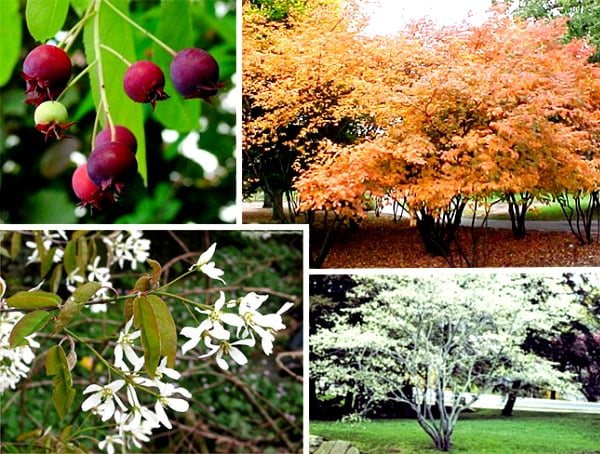
In addition to delicious berries, irga is valued by gardeners for its beautiful autumn foliage color and wonderful flowering in spring. Leaves in early spring are silvery-pubescent, copper-red or greenish-pink, depending on the species.
In season, the foliage turns green or olive with a slight pink tint. With the arrival of autumn, the irga turns into orange-yellow, purple or fiery red colors, becoming a bright accent of the garden and the colder, the brighter the colors will burn against the background of a withered, withering garden.
In the spring, the cinnamon is shrouded in a delicate white or pink haze of numerous star-shaped flowers collected in cluster inflorescences. After flowering, small fruits are tied, which ripen in summer, gradually changing color from green-red to dark blue or almost black. Recently, you can find a varietal novelty of Irgi with white berries (Altaglow variety).
The fruits are soft and sweet, taste a bit like blueberries, but in terms of nutritional value, they are much richer in many useful substances. Berries are a valuable source of B vitamins, magnesium, potassium, calcium and iron.
They contain significant amounts of flavonoids and anthocyanins, which are powerful antioxidants, vitamin C, pectin, organic acids and carotene. The health benefits of irgi berries are invaluable. Fruits are tied on two-year-old and old shoots.
Aftercare
The irga does not require any special care after pruning. The plant can grow branches very quickly, so in some cases decorative pruning can be done twice a year. After each pruning, you only need to monitor the growth of the growth. Sometimes it happens that the growth of new branches is uneven, which is why the bush begins to lean in one direction or another.
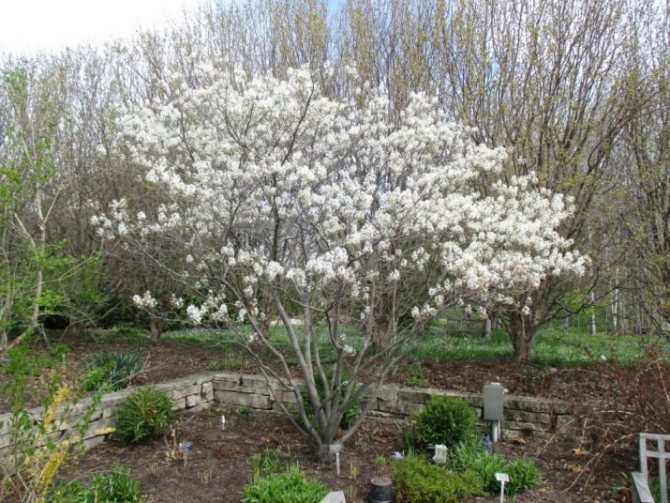

To avoid such distortions, it is recommended to tie the trimmed bushes with willow twigs or other material. The strapping will help level the shrub and prevent the young, immature growth from bending under the weight of the fruit during harvest.
Regular pruning and proper formation of the crown will make it the main decoration of the garden and annually get a rich harvest of delicious fruits.
You will learn about the autumn pruning of irgi from the following video.
Varieties and types of irgi with photos
A popular culture view – Irga canadensis (Amelanchier canadensis)… It is a short tree that reaches a maximum of 4 meters in height, but in gardens it can often be found in shrub form.
A variety of Canadian irgi “Ballerina” grown in the Netherlands. The fruits gradually change color from pink to purple. They have a diameter of about 15 mm and are very tasty.
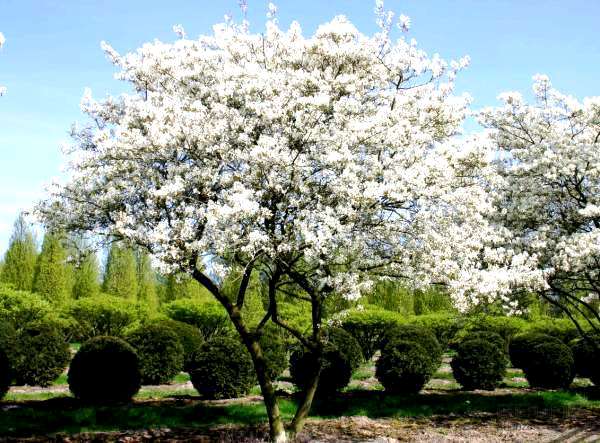

Blooming irga “Ballerina”
The bush reaches a height of about 4 meters. It is considered one of the most decorative varieties due to its numerous large flowers and beautiful autumn colors.
The variety “Rainbow Pillar” is 3 to 5 m high and 2 m wide with a vertical, narrow crown. Leaves are finely toothed, dark green, shiny orange-red in autumn, white flowers. The fruits are of high taste. The variety is suitable for creating hedges.
Planting irgi on the site
Seedlings are usually sold in containers, thanks to which the root system of the plant is well developed and there is no risk of damage during planting. The best time to plant is in spring or fall, but like most container plants, seedlings can be planted throughout the growing season.
The crop adapts to most types of neutral or slightly acidic garden substrates, with the exception of poorly drained or heavy clay soils that lack organic matter. On wet, cold and flooded soils, very alkaline or acidic plants grow poorly and often get sick.


Irga colossal in autumn
Since the root system of the cinnamon is deep and powerful, it is necessary to avoid places with a high occurrence of groundwater. For abundant flowering and good development, it is better to plant a crop in fertile loams or sandy loam soils; young seedlings must be provided with good soil conditions for rooting and growth.
Before planting irgi, you need to prepare the place well. If the ground is heavy and damp, mix it with sand. For marginal soils, it is recommended to apply one part of compost or humus before planting with the addition of multicomponent fertilizers based on phosphate and potassium.
Fertilizers are mixed in leaf soil taken from the planting pit in a ratio of 1: 3. At the bottom, a drainage layer of fine gravel or broken brick is poured.
Choose a sunny or slightly shaded place for growing irgi on the site, since a lot of light is needed for good fruiting and ripening of fruits. In the shade, the bush usually takes on a thicker form, branches strongly and grows to the sides, but its fruiting decreases, and the fruits themselves are not so sweet.
The plant is planted so that the grafting site is just above ground level. Dense plantings are excluded, since the seedlings grow over time.
It is better to stick to a checkerboard pattern with a distance of one and a half to 4 meters, depending on the growth of the variety. If the task is to create a hedge from irgi, then 1-2 summer bushes are planted at a distance of 30-50 cm from each other.
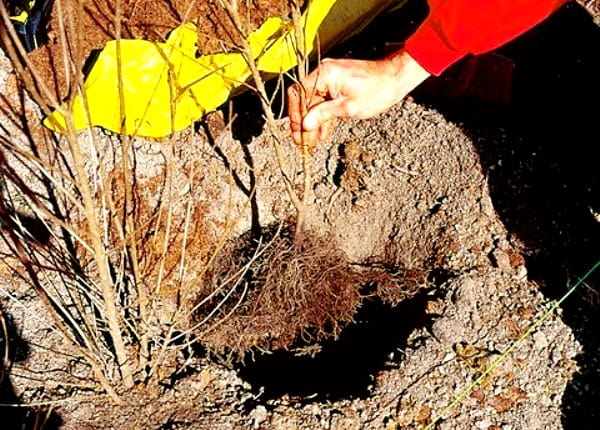

Planting irgi for hedges
After planting, the soil around the plant must be thoroughly tamped, and then watered abundantly so that the earth subsides and fills the voids. After subsidence, the earth is filled up.
To reduce moisture evaporation, saplings of irgi after planting are mulched with peat or crushed bark along the perimeter of the crown, but stepping back from the trunk by 10-15 cm.
Your personal gardening consultant!
This berry has several names – it is called the June berry, baby or healthy berry, shade shrub and cinnamon, which is due to some similarity to the Mediterranean grape. She is a wine berry and the one that “brings honey.” Have you already guessed what kind of plant we are talking about? Of course, about Irga! You just need to plant this culture once and in the future it will practically take care of itself – it is not afraid of poor soils, hot or cold winds, droughts. To explain this phenomenon is quite simple – it’s all about the roots, which can penetrate about two meters deep into the soil, occupying the same radius. So, for the game it will not be a problem to survive the gas pollution of the air, attacks by pests, shading or some other unfavorable factors.
Irga: planting and care
Despite the fact that the irga gives a rather strong root growth, this can be avoided, for which the seedling must be planted on fertile soil (it is logical, because in this case the plant will not have to “scour” in search of nutrients). In this case, you will get much less leaves than berries, which is why it is best to give preference to fertile, loose, airy soils rich in organic matter.
Such a seemingly insignificant nuance will guarantee that a good irga will grow on your site, planting and caring for this plant is not much different from similar actions for other berry bushes: – for planting, you should select only one- or two-year-old seedlings; – the planting pattern of the irgi should be approximately 4 – 5 2 – 3 meters; – planting seedlings is staggered, observing the distance between the bushes of 0,5 – 1,8 meters; – deep furrows should be prepared for planting seedlings; – the landing pit usually measures 50 – 80 30 – 40 centimeters; – after planting, the plant must be well watered (8 – 10 liters per bush), after which the soil surface is well mulched with humus or peat; – the ground part must be shortened, leaving about 10 centimeters, on which there would be 4 – 5 developed buds.
Today, irga remains a little cultivated plant and, unfortunately, gardeners cannot boast of knowing some undersized or compact bushes that would be most convenient to grow in a summer cottage. However, such circumstances are not always a sufficient reason to completely abandon the chosen venture. So, if you firmly decided that irga will grow in your garden, its cultivation will consist in correct and, most importantly, timely pruning.
Such an event is being held with several goals: – pruning of the irgi in autumn will allow you to regulate the density of the bush; – removal of old branches will contribute to the development of annual growths, which are fruitful; – in case the irga “requires” cultivation in the form of a bush, do not forget to also get rid of root growth, leaving only 1 – 2 shoots.
In general, pruning irgi in autumn or early spring can be carried out in any way convenient for you.
At the same time, it is necessary to take into account only a few main requirements of this plant: – in the first few years of pruning, it is worth leaving only the strongest zero shoots, after this number can be increased to 2 – 3 shoots; – a formed irgi bush should, on average, have about 10 – 15 branches of different ages; – all the subsequent time, pruning of irgi should consist in getting rid of all weak, old and diseased branches, as well as from “extra” root shoots; – for the convenience of harvesting irgi, it would be preferable to limit the growth of the bush, maintaining it at a level of 2 – 2,5 meters.
Since with each harvest a rather large number of nutrients are “taken out” from the soil, the irga will not be at all opposed to periodic feeding. Depending on the season, humus or compost mixed with minerals can be used as fertilizers (2 tablespoons of superphosphate and potassium sulfate, 1 glass of ash and 0,5 – 1 bucket of compost per 1 square meter of area). You can also feed irga with mullein or bird droppings solutions. All fertilizers should be applied with water. Yes, and in principle, special attention should be paid to watering, regardless of the weather – Irga loves moisture very much.
Autumn work near irgi
If you want to grow a good irga that would regularly “thank” you with a good harvest, remember that you should pay special attention to the plant in the autumn period. At this time, a lot of work will have to be done – if necessary, you can plant new seedlings or transplant adult bushes, carry out thinning or sanitary pruning of bushes, apply all the necessary fertilizers (in the fall it is worth feeding irga with organic matter – manure and compost). Also, remember to clean up the area and dig up the soil to prepare it for winter.
